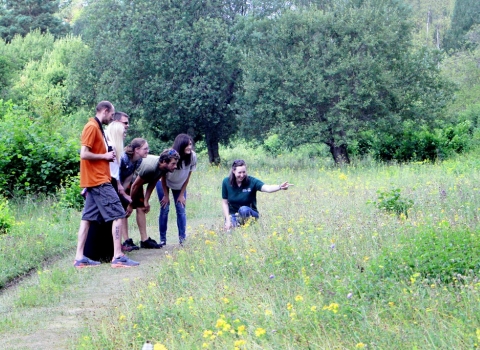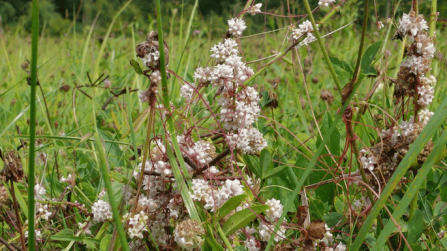
Our top 10 wildlife sightings in August

Common dodder
Common dodder is a strange plant. It has no leaves, only pink thread-like stems and dense heads of white and pink flowers. It grows in long, tangled masses, creeping up and over heathers, gorse, or other members of the pea family. As it has no leaves it can’t produce its own food, instead it is parasitic, using nutrients from the plants it grows around.
Look for it at Greenham Common and Inkpen Common where it grows on the heathland, or on the chalky slopes of Hartslock.
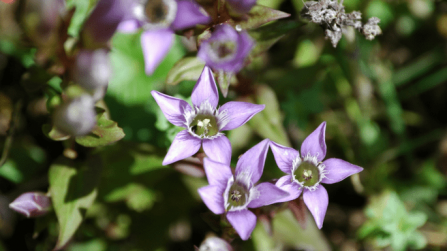
Gentians
The purple haze of gentians in late summer adds a splash of colour to a brown and parched landscape at this time of year.
Find out how to tell the difference between Chiltern gentians and the more common autumn gentians with our infographic.
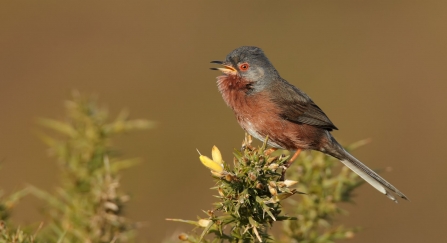
Dartford Warbler perched on gorse by Richard Steel/2020VISION
Gorse and Dartford warblers
You can find gorse in bloom throughout much of the year, providing valuable nectar (and welcome colour) when few other plants are in flower, but in summer the only seed pods remain.
On a sunny day listen for a popping sound coming from gorse bushes – this is the dry pods bursting apart in order to catapult seed away from the parent bush.
Look out for Dartford warblers and stonechats perched on top of gorse bushes in heathland reserves such as Greenham Common and Wildmoor Heath.
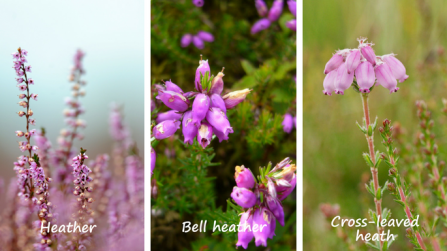
Heather
There are three species of heather to look out for: heather or ‘ling’, bell heather and cross-leaved heath.
- Heather is the classic heathland plant that turns heathland shades of purple and pink in August and September.
- Bell heather has vibrant purple bell-shaped flowers and grows on drier parts of heathland.
- Cross-leaved heath grows on wetter, boggier areas of heathland, where the soil is more acidic. The greyish-green leaves grow in groups of four, in a cross-shape, up the stem and the pale pink flowers form a cluster at the top of each stem.
Great heathland reserves to visit to see swathes of pinks and purples include Greenham Common, Snelsmore Common and Wildmoor Heath.
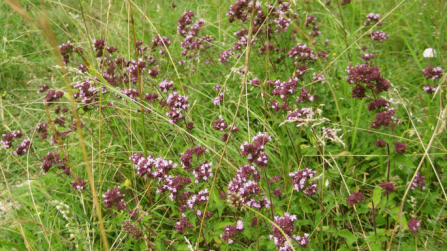
Wild marjoram
In summer, chalk grassland is filled with the aroma of wild herbs, including wild marjoram. This is the same species that grows in Mediterranean areas, but our wetter climate gives it a different aroma. It’s an excellent source of nectar and pollen for all sorts of insects including bees and butterflies. Look out for wild basil and thyme too.
Visit a chalk grassland reserve in the Chilterns to see these summer herbs. Try Bacombe Hill, Grangelands and The Rifle Range and Warburg Nature Reserve.
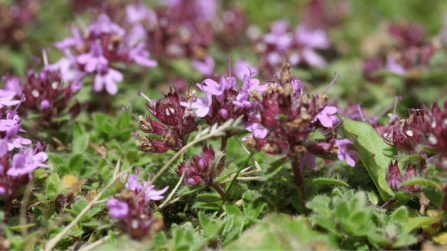
Large thyme
Large thyme is a low-growing, aromatic plant that often forms large mats on chalk grassland. In summer, the pinky-purple flowers attract a wide variety of insects, and smell gorgeous too!
Chalk grassland reserves in the Chilterns are great places to look for this. Try Dancersend near Wendover for a lovely mix of grassland and woodland.
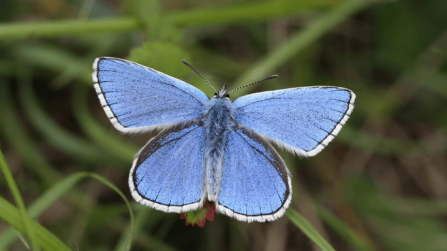
Adonis blue butterfly. Picture: Colin Williams
Adonis blue
Visit chalk grassland reserves, such as Yoesden or Hartslock, during August to spot a flash of electric blue from the male Adonis blue butterfly.
These stunning butterflies fly between mid-May and mid-June, and again from early August until mid-September as they have two broods each year.
The caterpillars have an interesting relationship with ants, which are attracted by a sweet secretion, and even a “Siren’s song” produced by the caterpillar. In return the caterpillar is tended and guarded by the ants helping it evade potential predators.
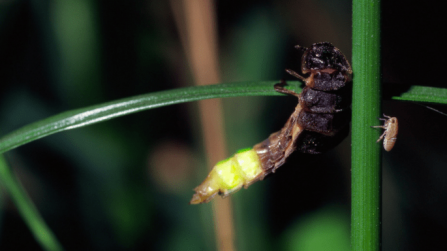
Glow-worm by Andy Fairbairn
Glow-worms
Glow-worms are not worms at all, but the female of a species of a beetle, which live on chalk grassland, heathland or along open woodland rides.
Look out for the last glow-worms of the summer this month. The female emits a greenish-yellow glow as she tries to attract her non-glowing mate. Try looking for them at Chinnor Hill nature reserve.
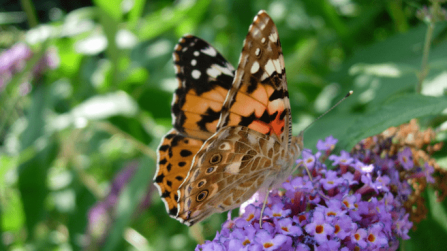
Painted lady butterfly on buddleia by Kate Dent
Painted lady butterflies
Painted lady butterflies don’t spend the winter in Britain, instead they migrate here from northern Africa and the southern Europe. In some years they arrive in huge numbers.
The adults come here in spring and lay their eggs on plants including nettles, mallows and thistles. The caterpillars grow and pupate, emerging as adults in August and September. They can be seen almost anywhere so look out for them on nectar-rich garden flowers. There seem to be lots around this year so keep an eye out.
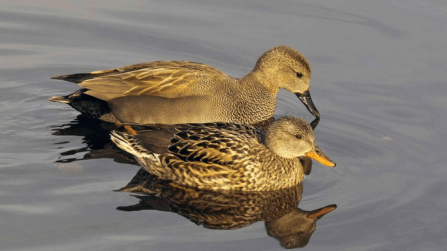
Gadwall
Take a close look at ducks which look like female mallards, they might just be gadwalls instead. Gadwalls look quite similar to female mallards but are a little smaller, they have a pure white patch (speculum) near the back of the body, where a mallard would have a blue one, and the males have black rumps and bills.
Once common gadwalls are a declining species, look out for them at Hosehill Lake and Thatcham Reedbeds.
Stay up-to-date with our work
Sign up below to receive the latest news from BBOWT, tips about how you can help wildlife, plus information on how you can get involved.


